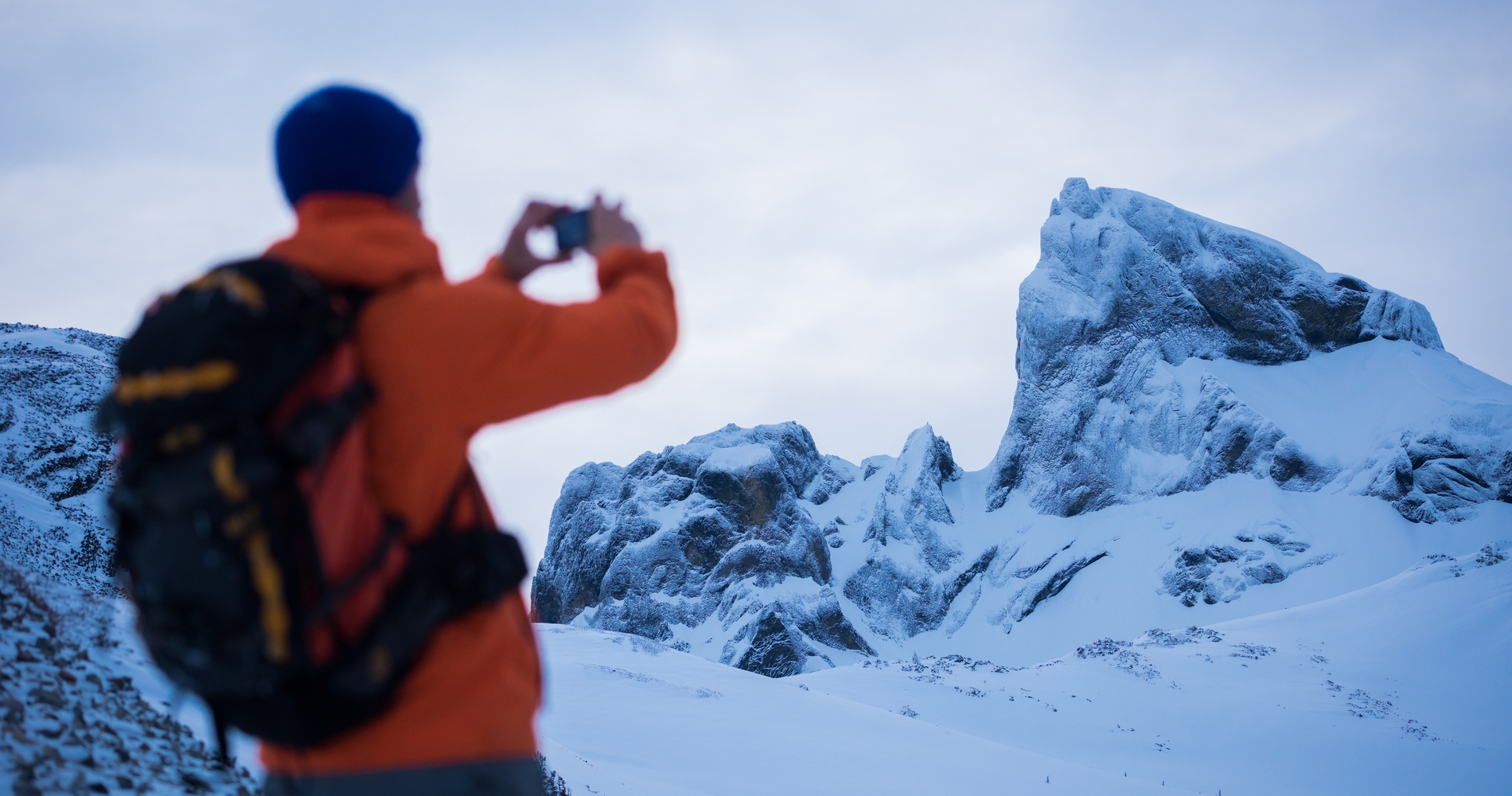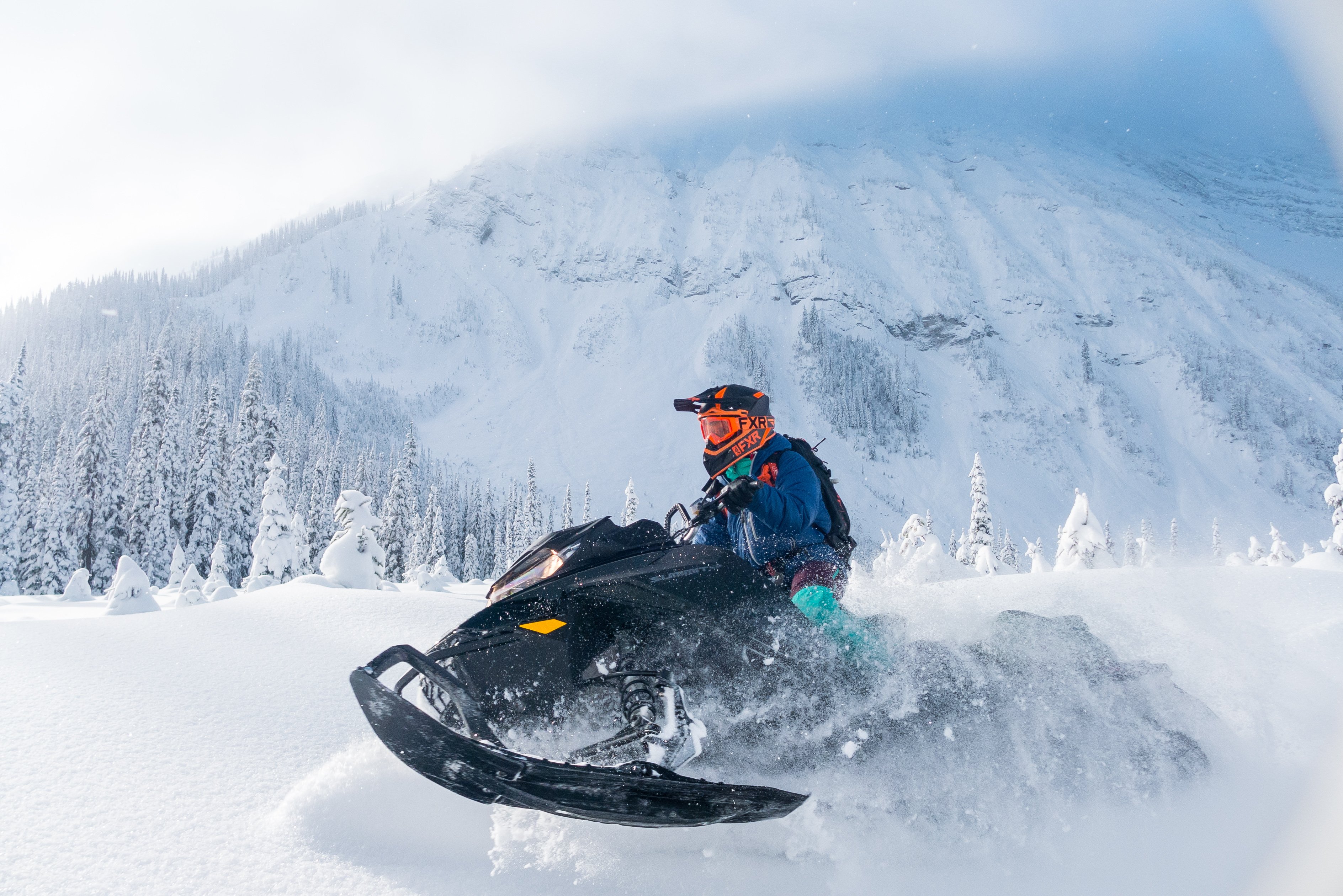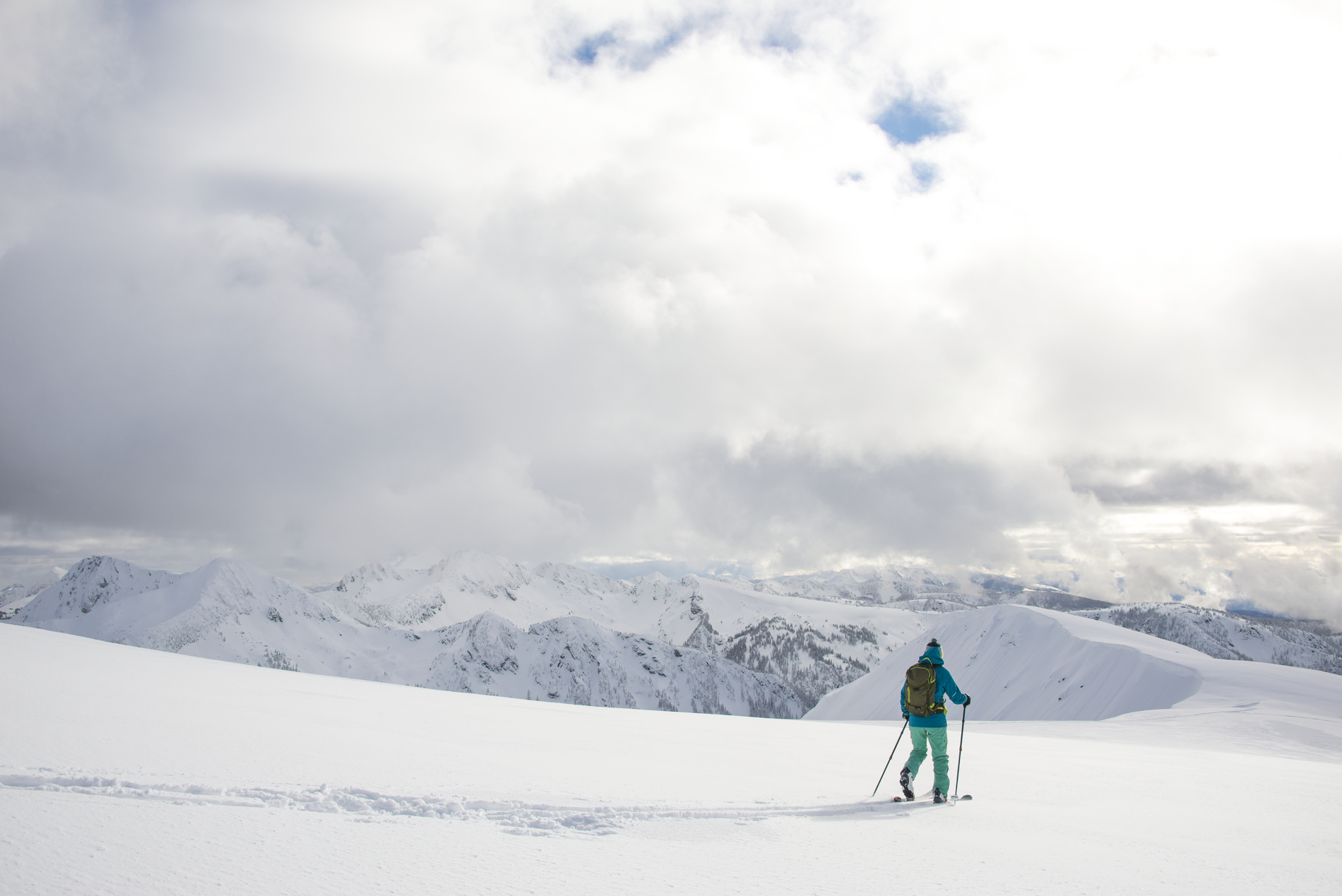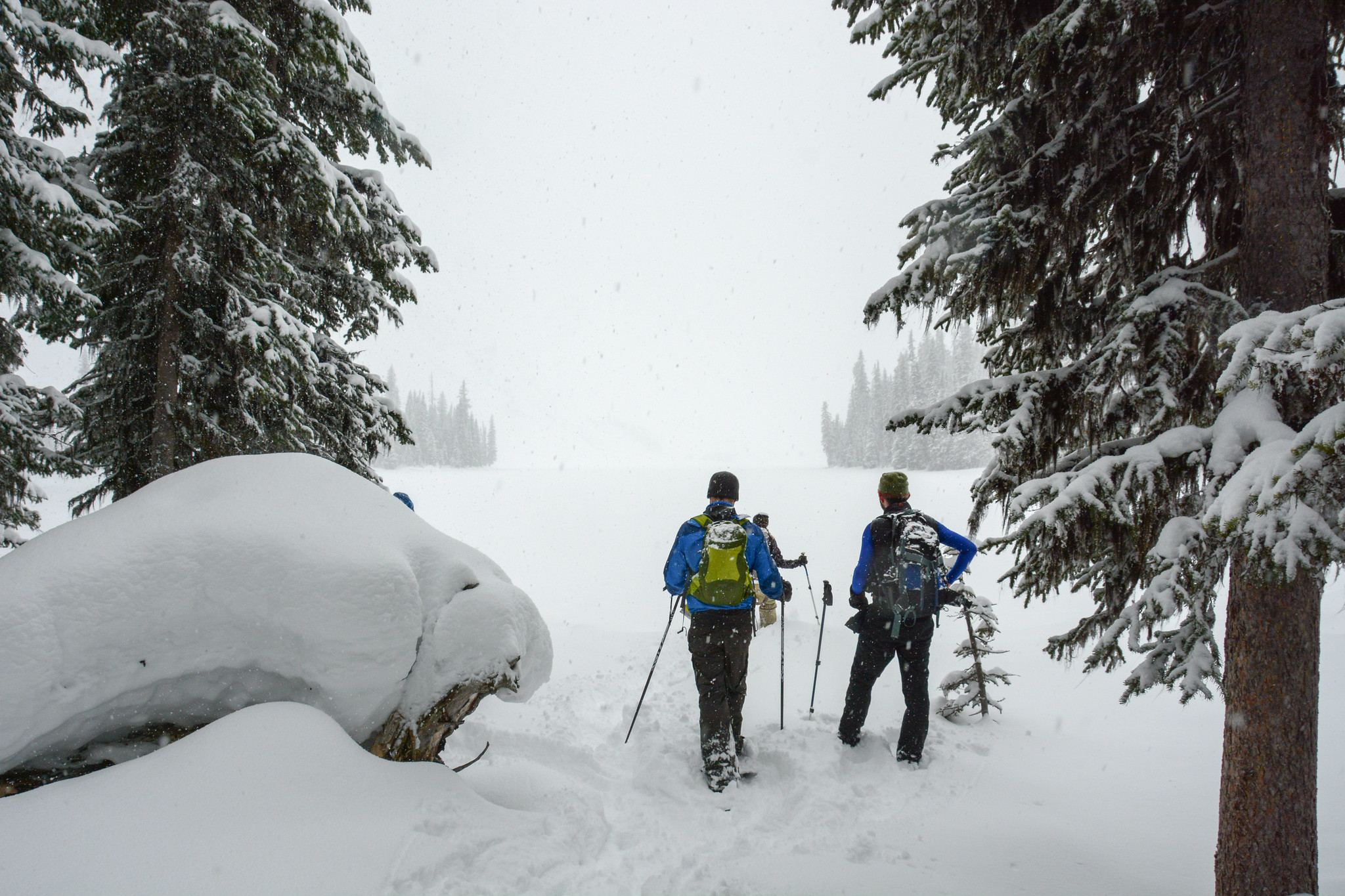Get the forecast
Before you leave the house, it’s essential to know what kind of conditions you might experience. Avalanche Canada publishes forecasts for 14 regions in BC, so make sure to check the one for your area before you head out.
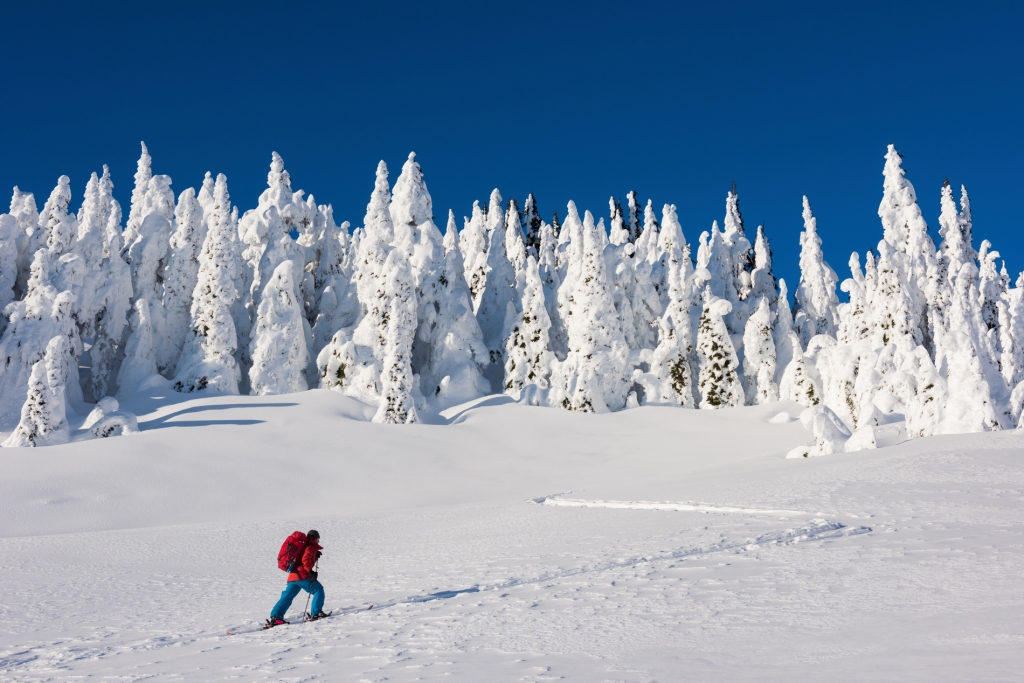
Ski touring in the Whistler backcountry | Tourism Whistler/Mike Crane
The forecast will let you know the overall avalanche danger rating for the day, and the type of avalanche problems that exist. This information will let you decide which terrain to avoid, and which terrain to enjoy. Or you might decide to avoid avalanche terrain together, or simply stay home and wait for conditions to improve.
You can find your local forecast on our homepage.
If you live in an area without an avalanche forecast, learn how to use the Dangerator to estimate the avalanche danger rating.


